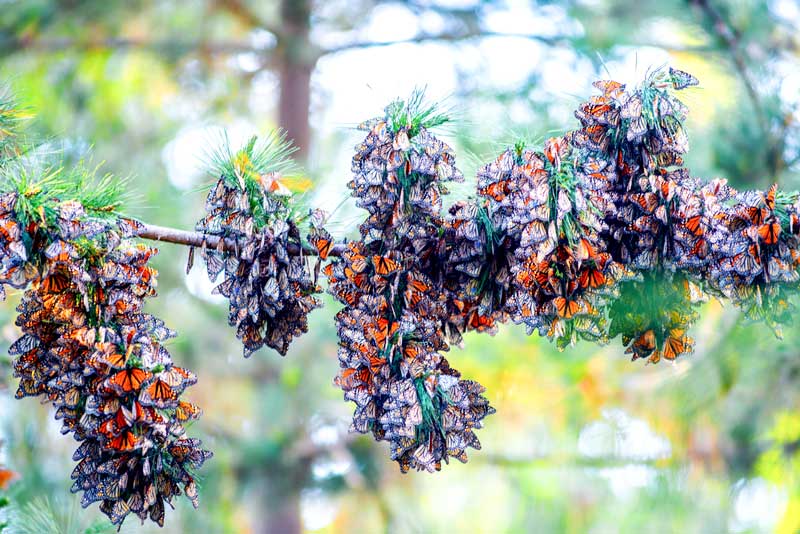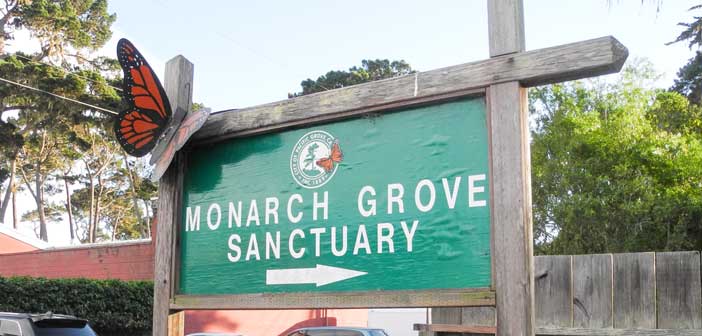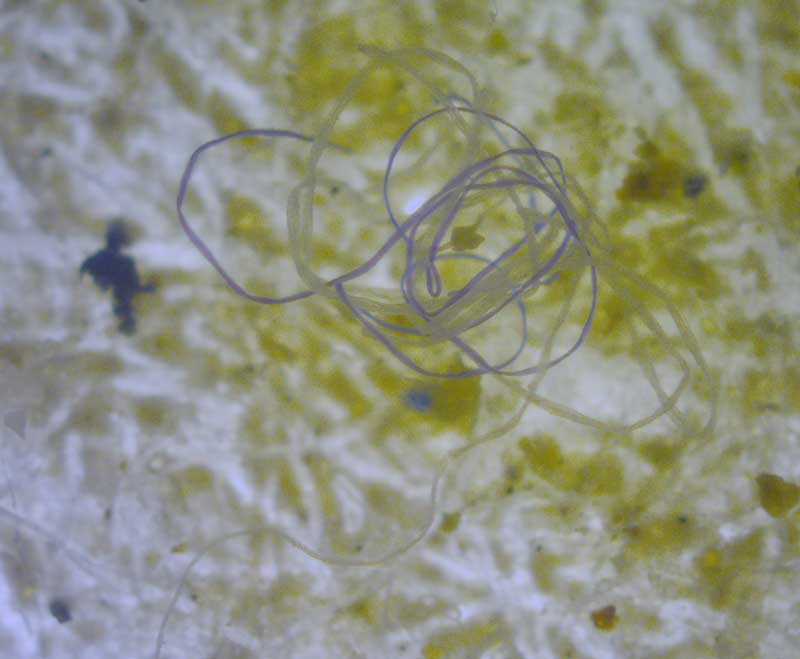by Joe Shorthouse
MANITOULIN—Readers of The Manitoulin Expositor are aware, through several articles over the past two years, of the amazing journey of monarch butterflies (Danaus plexippus) in the fall from Manitoulin Island to a mountain range in Mexico, and then the arrival of their offspring the following summer.
Readers are also aware of the precipitous decline in the North American populations of monarchs over the past couple of years. However, few are likely aware that about five percent of the North American population of monarchs overwinter along the west coast of California and do not mingle with the eastern population that overwinters in Mexico.
One of the most well known overwintering sites for monarchs that live west of the Rocky Mountains is in an urban park near the centre of the town of Pacific Grove, which is about 200 km south of San Francisco.
I have been aware of Pacific Grove and its monarchs since 1964 when as a 17-year-old in Lethbridge, Alberta, I released about 350 live tagged monarchs sent by Dr. Fred Urquhart of Toronto (the professor who discovered the Mexican overwintering site) in his attempt to discover the overwintering sites of monarchs bred in southern Alberta. None of the monarchs tagged by Urquhart and released in Lethbridge were ever found and to this day their overwintering sites remain unknown.
When my wife and I planned to spend a week in San Francisco prior to flying to Hawaii recently, a quick check of a map showed that a day trip to Pacific Grove and nearby Monterey was relatively simple where we hoped to see overwintering monarchs.
Pacific Grove is known to monarch fanciers as the city with a parade where children dress up as monarchs to welcome the butterflies back in the fall. Pacific Grove is also home to the Monarch Grove Sanctuary where each winter, up to 30,000 monarchs cluster together on the pines of the small sanctuary surrounded by houses.

photo courtesy of Ernie Schoenhoeffer of West Vancouver, B.C.
California overwintering sites have a similar microclimate to those in Mexico, though they contain difference species of trees. Arriving in October, the adult butterflies hang from the trees until February, when they spread northward and eastward as they hunt for milkweed plants on which to lay their eggs.
We arrived at the small sanctuary near the centre of the city at around 3 pm on January 27 and sure enough, there were about 17,000 monarchs roosting in Monterey pine and Monterey cypress.
We were told by a local volunteer guide that monarchs once roosted in sycamores, but with the dramatic rise in the human population in southern California, trees were cut to make room for shopping malls, freeways and houses, and the sycamores have almost disappeared. The remaining clustering sites lie in bays sheltered from wind, or farther inland where they are protected from storms.
We stood with about 15 other tourists in a cleared viewing area looking with awe at this amazing site. We could clearly see the butterflies with our binoculars, but I was disappointed at not having one of my SLR cameras with a telephoto lens since the volunteer told us that monarchs at the site had been tagged.
We watched with envy as a man and his wife examined and shot pictures of the monarchs with a long telephoto lens attached to their camera. We asked to see through his viewfinder and I thought I could see blue tags on a couple of the butterflies; however, it was quickly becoming too dark to be sure.
I told him about my experiences with monarchs at Lethbridge and on Manitoulin Island and it turned out he was a Canadian, Ernie Schoenhoeffer, overwintering along with his wife at nearby Santa Cruz and was from West Vancouver, B.C.
Explaining that the presence of monarchs in California would make an interesting story for readers of The Manitoulin Expositor, he promised to return a couple times over the next week to attempt better pictures when the light was more favourable. This he did and one of his amazing photographs accompanies this article.
Thanks to Ernie, we can enjoy his photograph that shows at least 10 monarchs with blue tags. Good thing he visited the site when he did, as he wrote again saying he visited a week later and all the butterflies had left.
There are about 200 sites along the California coast where monarchs overwinter and it is thought all are part of a population that remains west of the Rocky Mountains and produces caterpillars in the summers as far north as southern B.C.
Sadly, populations of monarchs have been declining all over North America. In the 1990s, estimates of up to one billion monarchs made the epic flight each fall from Canada and the northern US to sites in the oyamel fir forests north of Mexico City, and more than one million overwintered in forested groves in California. Now, researchers and citizen scientists estimate that only about 56.5 million monarchs remain, representing a decline of more than 80 percent over the past 20 years.
This decline and the public’s concern for the future of monarchs has caught the attention of the US government. On February 9, their Fish and Wildlife Service announced a $3.2 million initiative for monarch conservation in an attempt to restore habitats for monarch caterpillars.
Hawaii
After vacationing in California, we flew to Hawaii for two weeks and with images of the California monarchs still in our minds, we thought our eyes were playing tricks when we saw several adult monarchs glide by as we walked along beaches near Honolulu.
Local naturalists confirmed that monarchs are indeed established on the Hawaiian Islands. Apparently monarchs were first noticed on the Islands around 1850 soon after a plant known as ‘tropical milkweed’ was introduced and was suitable as food for the caterpillars. Later, another host upon which the caterpillars could feed, called ‘crown flower,’ was also introduced and served as food. Besides food plants for the caterpillars, adult monarchs need plenty of flowering plants with nectar. This is not a problem in Hawaii.
Whether Hawaiian monarchs flew from the mainland or were introduced by humans is not known. Monarchs are capable of long distance flights and are known to have crossed the Atlantic landed in Great Britain. However, they have never become established in Britain because of the absence of their host plants.
Not surprisingly, the Hawaiian populations have lost the instinct to migrate. Watching monarchs one day in Hawaii when temperatures were 25°C then returning home to Sudbury the next with temperatures of -30°C, we could certainly appreciate their change in behaviour!
Joe Shorthouse is a retired entomology professor at Laurentian University and a summer resident of Manitoulin. He is a frequent contributor to The Manitoulin Expositor.





